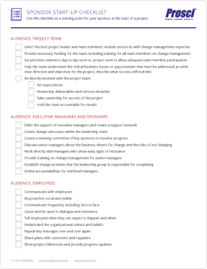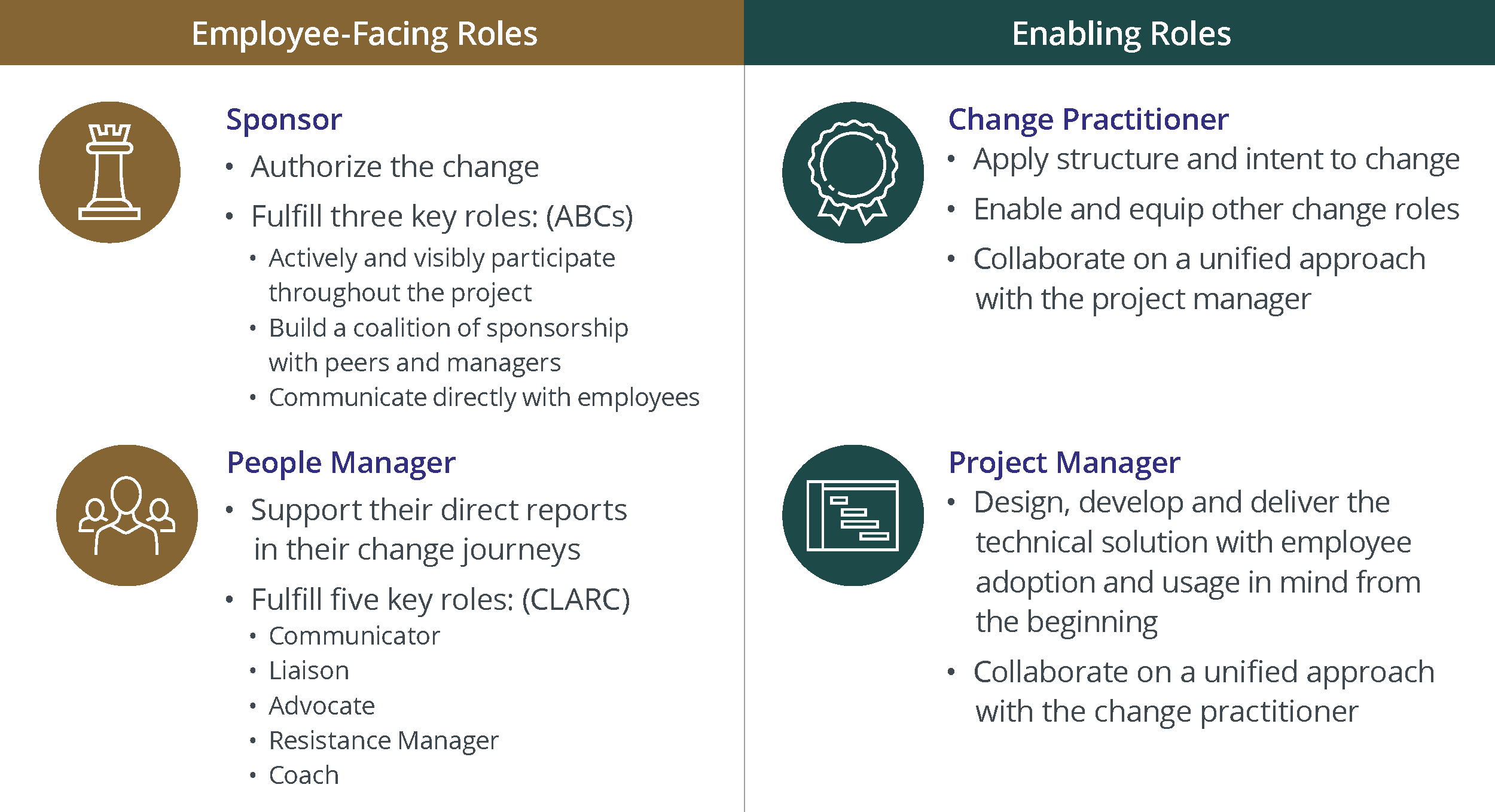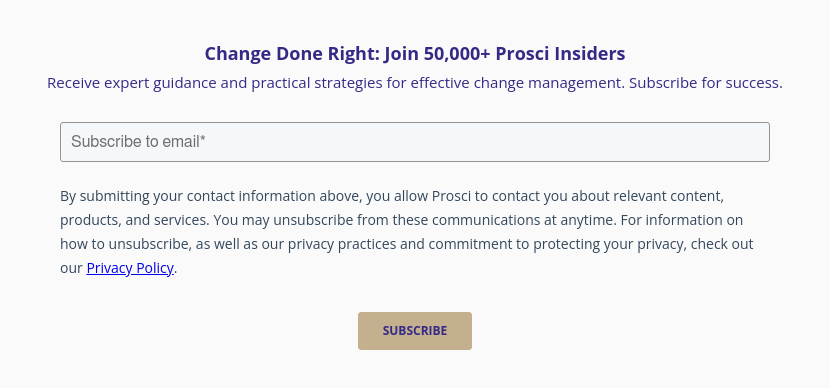
This all takes place as the project manager works with the change practitioner to implement the collaboration tool by ensuring all employees are engaged and supported (enabled by Change Management) and informed (enabled by Project Management) throughout the rollout.
At the same time, the people managers must fulfill the roles of CLARC for Change #2, the less disruptive change:
- Communicator – Understand why your teams or individual employees need to utilize the new expense management system.
- Liaison – Provide team member feedback to the project and change team about required compliance and user adoption.
- Advocate – Demonstrate support for this tool in words and action.
- Resistance Manager – Support team members who may be struggling to use the tool to ensure that reimbursements and purchases are processed correctly.
- Coach – Support transition to the future state by offering ongoing encouragement, compliance and recognition, along with guidance to maintain accuracy.
Meanwhile, the change practitioner supports the people-facing managers and supervisors to ensure that all identified impacted employees who will be using the expense management system are engaged.
It’s important to note here that, as the changes progress, change practitioners also work with executive sponsors to support their efforts to execute their unique responsibilities. We call these responsibilities the ABC’s of Sponsorship: Actively and visibly participate in the change, Build a coalition of sponsorship, and Communicate support and promote the change.

Need to help your sponsor understand the specific activities required for each audience and project phase in a change? Download our Sponsor Start-Up Checklist.
Remember, change practitioners are change enablers who orchestrate change from behind the scenes. When it comes to managing change, the change practitioner’s role is to enable people managers and executive sponsors, who execute their specific roles and responsibilities to lead people on the front lines through change.
What does this mean in terms of time and effort? The more change capable your people-facing roles are in executing their own responsibilities, the more change practitioners can leverage their specific skills to advance the change. The less capable their people-facing roles are, the more effort the change enablers must exert to upskill them during the change—while also executing their other responsibilities.
Overall, lower change capability in your organization means more time and effort will be diverted from change practitioners and project teams during a change.
Investing in Change Capability
Applying a holistic approach to building long-lasting change capability includes leveraging a structured approach and toolset across the organization, and building change competency in executives, leaders and front-line employees. The investment is worthwhile. Our research shows that projects with excellent change management are 93% more likely to meet or exceed objectives.
Other benefits include:
- Employees speaking a common language for change
- Leaders embracing and leading change more effectively
- Employees increasing speed of adoption
- Practitioners minimizing resistance early and throughout the change
- Solutions reaching optimal financial performance
- Projects and improvements finishing on time and on budget
- Organizations increasing speed and agility with a competitive edge
Make Change a Competitive Advantage
If you invest in building change capability in your organization, employees will embrace changes more quickly—regardless of how complex, how many, how large and how disruptive they are. The greater the skills and capability of people-facing roles, the less effort required from a delivery perspective. Over time, your organization can lower costs because you rely progressively less on external trainers and consultants. Eventually, you can make change a competitive advantage for your organization.
Did you find this blog helpful? If so, someone else might benefit from it too. Please share it!







